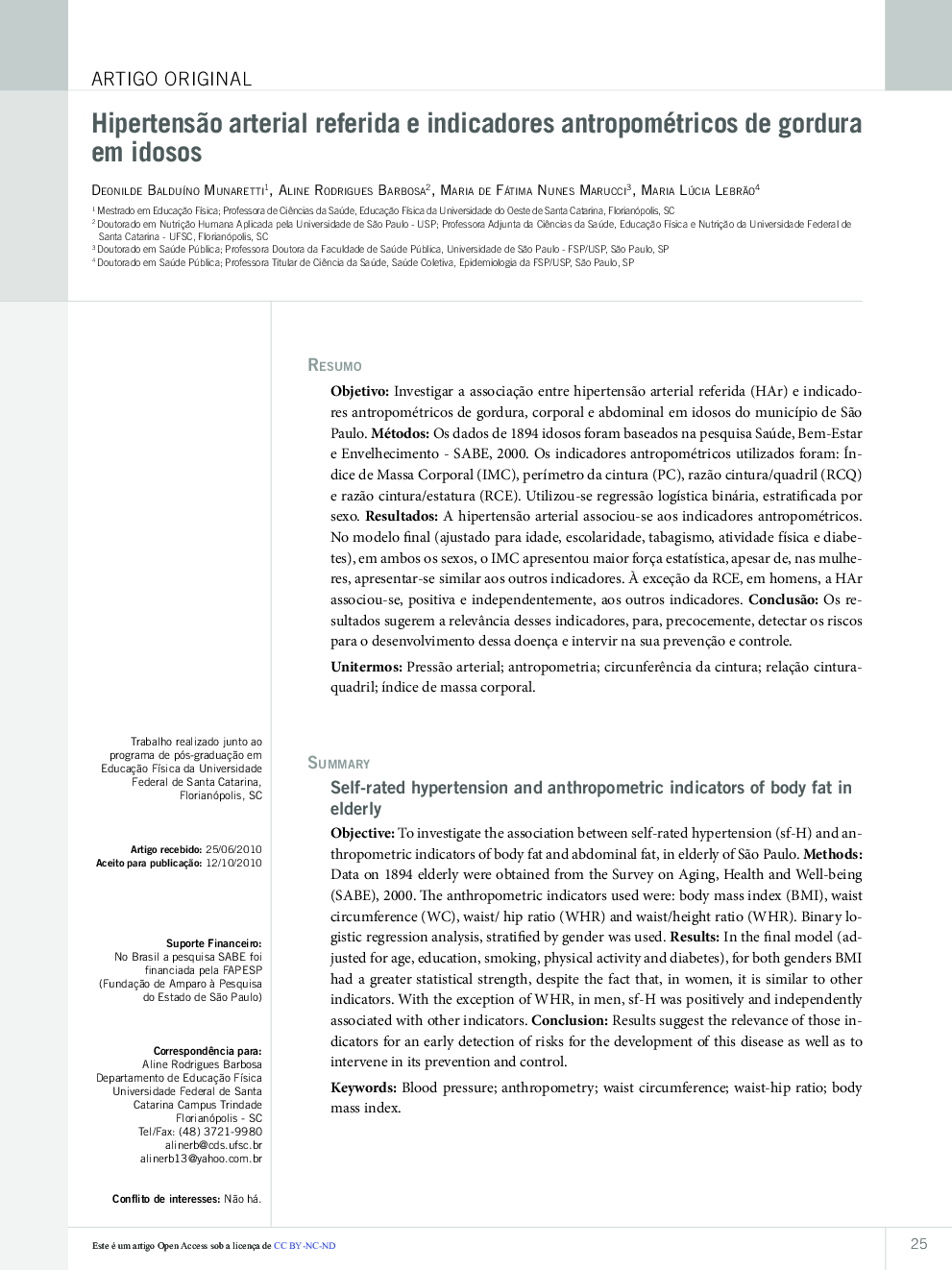| Article ID | Journal | Published Year | Pages | File Type |
|---|---|---|---|---|
| 3825162 | Revista da Associação Médica Brasileira | 2011 | 6 Pages |
ResumoObjetivoInvestigar a associação entre hipertensão arterial referida (HAr) e indicadores antropométricos de gordura, corporal e abdominal em idosos do município de São Paulo.MétodosOs dados de 1894 idosos foram baseados na pesquisa Saúde, Bem-Estar e Envelhecimento - SABE, 2000. Os indicadores antropométricos utilizados foram: Índice de Massa Corporal (IMC), perímetro da cintura (PC), razão cintura/quadril (RCQ) e razão cintura/estatura (RCE). Utilizou-se regressão logística binária, estratificada por sexo.ResultadosA hipertensão arterial associou-se aos indicadores antropométricos. No modelo final (ajustado para idade, escolaridade, tabagismo, atividade física e diabetes), em ambos os sexos, o IMC apresentou maior força estatística, apesar de, nas mulheres, apresentar-se similar aos outros indicadores. À exceção da RCE, em homens, a HAr associou-se, positiva e independentemente, aos outros indicadores.ConclusãoOs resultados sugerem a relevância desses indicadores, para, precocemente, detectar os riscos para o desenvolvimento dessa doença e intervir na sua prevenção e controle.
SummaryObjectiveTo investigate the association between self-rated hypertension (sf-H) and anthropometric indicators of body fat and abdominal fat, in elderly of São Paulo.MethodsData on 1894 elderly were obtained from the Survey on Aging, Health and Well-being (SABE), 2000. The anthropometric indicators used were: body mass index (BMI), waist circumference (WC), waist/ hip ratio (WHR) and waist/height ratio (WHR). Binary logistic regression analysis, stratified by gender was used.ResultsIn the final model (adjusted for age, education, smoking, physical activity and diabetes), for both genders BMI had a greater statistical strength, despite the fact that, in women, it is similar to other indicators. With the exception of WHR, in men, sf-H was positively and independently associated with other indicators.ConclusionResults suggest the relevance of those indicators for an early detection of risks for the development of this disease as well as to intervene in its prevention and control.
